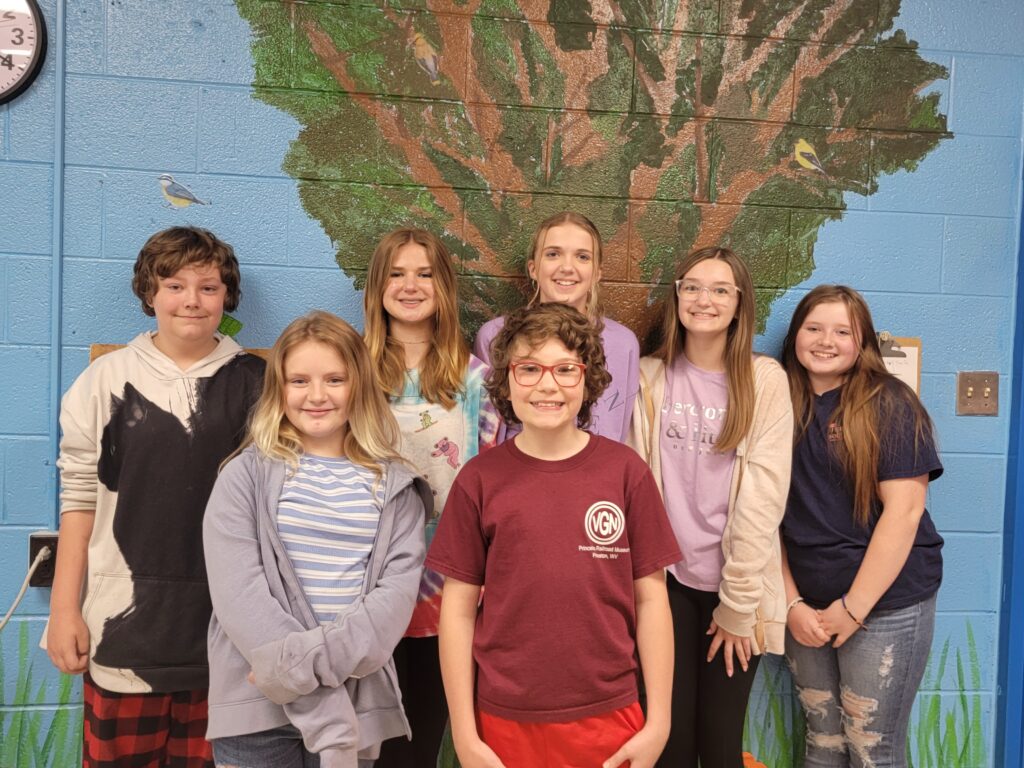Helping NASA Return to the Moon
Teams from schools, clubs, and other education organizations across five southeastern states and Puerto Rico recently completed experiments as part of the Plant the Moon Challenge Space Grant Regional Expansion Project. A total of 446 teams involving 4,483 students participated in an expanded version of the Institute of Competition Sciences Plant the Moon Challenge through a regional partnership of state Space Grant consortia led by the Virginia Space Grant Consortium and funded by NASA.
West Virginia went from 0 to 74 teams, as this was its first time participating in the Plant the Moon Challenge competition. The 74 West Virginia teams were recruited and assisted through the competition process by Dr. Laurie Ruberg, CEO of PLANTS, LLC, who serves as the West Virginia coordinator for the Plant the Moon Challenge Space Grant Regional Expansion Project.

The global science experiment and research competition challenges students to examine how vegetable crops can grow in lunar soil. Using lunar soil simulant from the University of Central Florida’s CLASS Exolith Lab, the teams designed and conducted a set of experiments using the simulant to grow crops over eight weeks for a future long-duration mission. Students’ research will help NASA scientists understand how to use lunar soil to provide nutritious crops for future missions to the Moon or Mars.
The NASA Space Grant Regional Expansion Project builds on the Plant the Moon Challenge by expanding the reach of the challenge to underserved and underrepresented STEM students in five partnering states: Virginia, North Carolina, South Carolina, West Virginia, Florida, and the U.S. territory Puerto Rico. The WV Space Grant Consortium (WVSGC) and program partners are excited to work with the Institute of Competition Sciences to allow more students and educators to participate while covering the cost of regolith kits, adding a materials stipend for participating teachers, expanding professional development for educators, enhancing speakers and activities for participants, and providing experiential prizes in each state and at the regional level.
The Institute of Competition Sciences engaged a panel of NASA and industry scientists, program executives, and other dignitaries to determine Best in Show award winners from all international submissions as well as regional and individual state entries. Two West Virginia schools were selected as winners in the middle and high school categories of the Plant the Moon Challenge competition.
The Princeton, WV Team #12319 called Gernips placed first internationally in the High School Division for Best Evaluation of Results. The team coach for the Gernips is their science teacher, Carol Whitteker. Team members include Mason Dillon, Dani Gunnoe, Courtney Guzardo, Miles Munique, Nevaih O’Toole, Samuel Pendergrass, Kadiah Shanan, Malak Shanan, and Tayah Small.
The Princeton, WV Team #12540 called Demeter placed first internationally in the Middle School Division for Best Experimental Design. The team coach for the Demeter team is their science teacher, Christine Lester. Team members include Kaitlyn Artrip, Eva Coleman, Rayleigh Murphy, Kyleigh Mitchem, Zoey Dunn, Melody Perdue, Lake McKenzie, Casen Honaker, Jordan McVey, and Michael Britt.
Awards were also announced in each state for both the middle school and high school levels for Evaluation of Results, Growth, Experimental Design, and Innovation. A full list of West Virginia state winners is shown in the table below. Each state-level winning team will receive an experiential award that includes a special science experience for its winners.

The Plant the Moon Challenge Space Grant Regional Expansion Project will be offered again in the spring semesters of 2024 and 2025. For more information, contact: [email protected].
